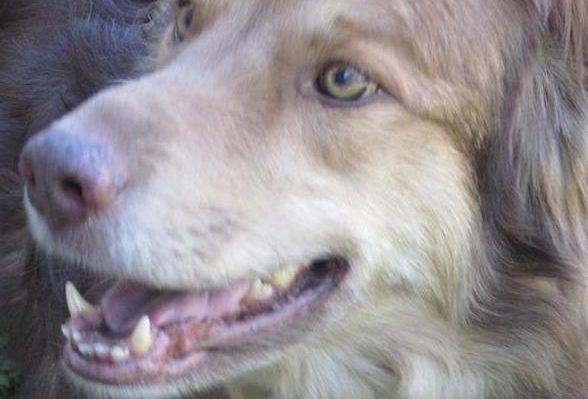
I hope to train my younger dog to alert on my older dog. I would like him to locate her and to indicate to me her location (she is losing hearing and often doesn’t hear me call). I have decided to train this behavior with the use of a clicker. High-value food treats will be the reward.
I intend to work in short sessions, only a few minutes at a time, as many times a day as I can. I will train when both dogs are relaxed and empty—that is, after they have been outside to exercise and eliminate. I will not train if either or both dogs are anxious or tired, or if I am anxious or tired. I will start with no distractions.
I have these items for every training session:
▪ Clicker—I use a clicker on a wrist band
▪ Treats—tiny pieces of high-value foods
▪ Clock—so I know how long we’ve worked
▪ Towel—to keep my hands from getting slimy
So my older dog can be “present” for the training with as little stress for her as possible, I’ll keep her in her own small crate, which has not only a see-through door and sides, but also a see-through top. I want to acclimate her to having the younger dog come near her without being fearful that he will step on her (he is a big dog and she weighs only five pounds). I will randomly reward her with high-value food treats while she is in the kennel.
We’ll start with the little dog in the kennel on the floor in my bedroom, where it stays when we’re at home. She sleeps in it at night by her own choice. Initially, I’ll sit on the edge of the bed close by the kennel, though I may soon decide that standing up and moving around the room works better. I will bring the younger dog into the room to a spot near the kennel.

I will click and treat for any movement on the younger dog’s part toward the kennel with the older dog in it. I will watch the younger dog very closely, because “any movement” could be an entire half-turn toward her or simply an eye flick in her direction. Observation is everything!
I’ll initially give the treats from my hand, but hope to switch soon to tossing the treats on the floor. That allows the dog being trained to “reset” himself wherever he would like. (I don’t want him to think he has to start from the same spot every time.) Tossing the treats may be problematic in the small room we’re using, but moving on to other locations, as we will eventually, should make treat-tossing much easier.
I will maintain a friendly, non-demanding affect while training. I will not show any disappointment I might feel, nor express any verbally—that doesn’t help. Overt expressions of pleasure at his successes might likewise throw him off. He might become too excited himself, and that would also be counterproductive. To encourage my dog to keep trying, I will be patient. It may not be easy, but I will wait for him to do whatever he’s going to do. It must be his choice. I will maintain my cool throughout the training session; it’s in his and my best interests.
I’ll remain aware of the length of the training session, and continually reassess the engagement of my dog. I won’t run on too long when he is making great steps ahead. Instead, I’ll mark a particularly successful approximation with a click and then jackpot with treats—a bunch of treats all at once. The jackpot ends the training session.
When we’re done, I’ll take the dog away from the training location for a break—outside, if possible, where he can pee on some vegetation and I can maybe throw a ball or toss a toy if that would be fun for him. I’ll make sure fresh water is available. I will not feed him a regular meal until he has had at least one hour of “rest” after his training session (preferably longer).
I must also keep a close eye on the other dog—the “prop” in this scenario—since her attitude about what’s going on is important, too. She should be comfortable in the little kennel while I train the younger dog. If she’s not, I need to stop doing what I’m doing and figure out a better way. She also needs a break when the training session is over, and a “rest” before a meal.
I probably won’t speak a word during these training sessions, not at this initial stage. That’s right—no cues, no commands, no verbal encouragement or discouragement. I will, if I can, not make a single sound. Right now, my job is to get the behavior and to reward the behavior. That is all. I can decide what words I’ll use later, but not in the middle of the training. While I’m in the middle of the training, I must concentrate completely on observing the dogs.



